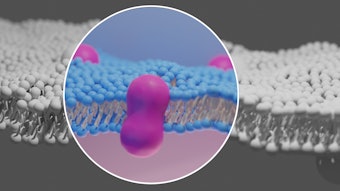
Letybo, a common injectable for glabellar lines in South Korea, was approved by the FDA in 2024 and is now finding its way in U.S. practices as a leading neurotoxin next to alternatives like Botox, Dysport and Xeomin.
LetibotulinumtoxinA, a botulinum toxin type A, is the active ingredient in Letybo–manufactured by Hugel, a producer of injectables, including toxin, hyaluronic acid fillers and skin boosters, as well as absorbable sutures, exosomes and skincare, per an April 21 announcement.
While Letybo is derived from the botulinum toxin A, like Botox, Dysport or Xeomin, the neurotoxin is approved along with the product’s manufacturing process, so these second-generation toxins, like Letybo, have the benefits and advantages of newer manufacturing processes, says Ava Shamban, MD, a board certified dermatologist and clinical investigator in Letybo FDA trials.
Letybo is a 900KD botulinum toxin A produced through an enzyme-free purification process using a protamine sulfate precipitation, double chromatography, designed to remove nucleic acids and enzymes of animal origin–contributing to purity of the toxin by removing bacterial side products and lyophilization to provide stability.
“As far as other benefits or drawbacks, that is yet to be seen in practice,” Shamban says. “As a principal investigator in the FDA trials, we looked only at the glabella, [and] that being said, the patients filled out a questionnaire and reported 25% onset in 24 hours and 75% within 72 hours.”
Results may last up to four months, according to the company. Though the injectable has subtle differences in purity and manufacturing compared to other neurotoxin products on the market, she says the introduction of Letybo will neither impact any practice protocols nor require full training, as the product is the same as existing toxins.
“This new product is very similar to other existing toxins in the market based on the results of the clinical trials, [and] the product selection will depend on pricing and provider preference,” Shamban says.
The Letybo injectable was evaluated by the FDA in the BLESS clinical program (Botulinum Toxin Treatment for Glabellar Lines Efficacy and Safety Study), enrolling 1,271 subjects, and out of those subjects, 1,129 of BLESS patients chose to continue up to three additional treatment cycles, per the company.
“That retention speaks volumes, and despite repeated exposure, no patients in the pivotal trials developed neutralizing antibodies, reinforcing Letybo’s exceptional immunogenicity profile,” Shamban says.
Preference of neurotoxin products, however, will depend on brand or name recognition, including an extensive track record, rather than differing cosmetic benefits, she adds.
“Hugel has successfully brought K-Beauty to international markets with trusted products backed by science and high standards,” says Jennifer Levine, MD, a double board-certified facial plastic surgeon and early Letybo user. “Already distributed in over 65 countries, including across Europe, its U.S. debut in 2025 is backed by positive clinical data, provider confidence, and patient satisfaction, with over 31 million treatments performed worldwide.”











